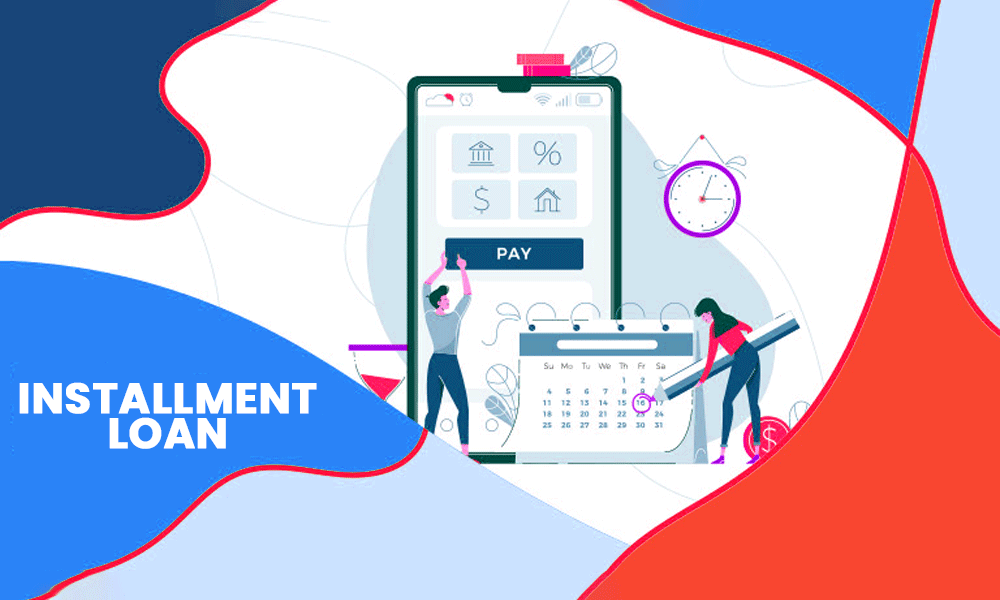What is an Installment Loan and How Can It Help You?

There are many lending options tailored to the needs of consumers today. An installment loan presents one of the widespread solutions that can be utilized for purchasing a house, an auto, or any other expensive item.
A mortgage is another common example of an installment loan. Such loans have predictable payment schedules but there are some downsides as well. Keep on reading to find out more about this type of credit, its pros and cons, and when you should take out this lending option.
What is an Installment Loan?
Let’s start with the basics of installment loans. This is a lending option that allows you additional money up front that can be paid off over time according to a schedule of monthly payments. The common examples of installment loans are auto loans and mortgages.
Such loans offer a predictable payment schedule, while the repayment term can be several months and even years. You may also use a cash app borrow money for your needs and repay them over time. But only installment loans have a fixed interest rate so every payment is the same.
How Installment Loans Work
Student loans are personal loans and are also types of installment loans. The repayment term may last several months but it can also be stretched up to several years. The monthly payments, in this case, are more affordable and fixed so that you pay the same sum each month. This lending option provides cash in a lump sum straight away. The monthly payment is calculated so that every payment lowers the loan balance and covers the interest costs.
It gradually brings your balance to zero over the lifetime of the loan. Before you even accept the loan, the crediting company will offer preliminary quotes on monthly payments. It doesn’t affect your credit rating. The largest part of the interest is paid in the early months or years. A small portion of your loan balance will be covered with the first few payments. Gradually, these payments will pay off existing debt.
Pros and Cons of Installment Loans
A recent poll found that nearly 70 percent of Americans have less than $1,000 stashed away, while 45 percent of respondents have no savings at all. Although this lending option has many benefits there are some downsides as well.
Pros:
- Monthly fixed payments. In most cases, the payments will be fixed so that the client pays the same sum each month. It’s convenient for your budgeting needs.
- Fixed interest rates. Also, the interest rate will be fixed during the lifetime of the loan which makes it easy to remember and repay.
- Spreads out the cost of large expenses. It is possible to cover big-ticket purchases with the help of an installment loan. You may buy an auto or even a house. Not many Americans have enough funds in their savings account, so getting this lending option may be a reasonable solution.
- Known payoff date. You know when the final payment will be so it’s easier to plan your budget.
Cons:
- No ability to borrow more. Additional borrowing isn’t allowed if you request an installment loan. They are one-time loans, so you will have to apply for a new lending option or seek alternative funding solutions if you require extra cash after you obtain this loan.
- Borrowing charges. The borrowing fees may be rather expensive, while personal loans charge origination fees of 1% to 8% of the loan sum. Payday lenders can also offer installment loans but the APR will be around 400%.
- Collateral can be at risk. Pay attention to making regular payments as failing to repay the debt on time may lead to negative consequences. The lenders may even seize your collateral.
Limitations of This Loan Type
It can be a suitable lending option for many consumers who can’t afford to buy a house or an auto using only their savings. While an installment loan can be beneficial, it also has some downsides. This is a monthly obligation that shouldn’t be skipped. If the borrower doesn’t make on-time payments according to the repayment schedule, collateral can be lost and the credit rating may be damaged.
You can’t predict when the next curveball of life will hit you and many borrowers don’t even have a safety net to protect them from urgent financial emergencies. Try to keep your debt-to-income ratio below 30%. If you max it out, you won’t be able to qualify for more lending options. More flexibility can be offered by a credit card or other alternative options.
How to Obtain an Installment Loan
Here are some steps for you to take if you are ready to receive this lending option.
- Compare. You have the right to compare several offers from different service providers. Each creditor may offer various interest rates and terms as the methods for accessing your loan request and choosing the rate differential. You may want to compare your offer with lines of credit or credit cards.
- Pre-qualify. If you decide to pre-qualify, you will be able to get potential rates and loan sums before you submit the application. In this case, the credit rating of the borrowers won’t get damaged as no hard inquiry will be performed during pre-qualification.
- Improve your application. You may consider a co-signed or a joint loan before you apply. Some borrowers want to secure their loans to get a lower rate. Be careful with the consequences as your collateral can be taken over by the lender in case of non-payment.
- Submit a loan request. Credit unions, traditional banks, and even alternative lenders may issue installment loans. The application process is different in each crediting institution, as the local banks require paperwork while online lenders accept web applications.
The Bottom Line
Both good and low credit holders have a chance to apply for an installment loan. Some service providers have lower credit rating demands and consider other data, like education, employment, account transactions, and current debts.
If you want to purchase a house or a car, you may compare the rates and offers at several lenders to choose the most favorable terms. Keep in mind that installment loans may boost or lower your credit depending on your monthly payments.










